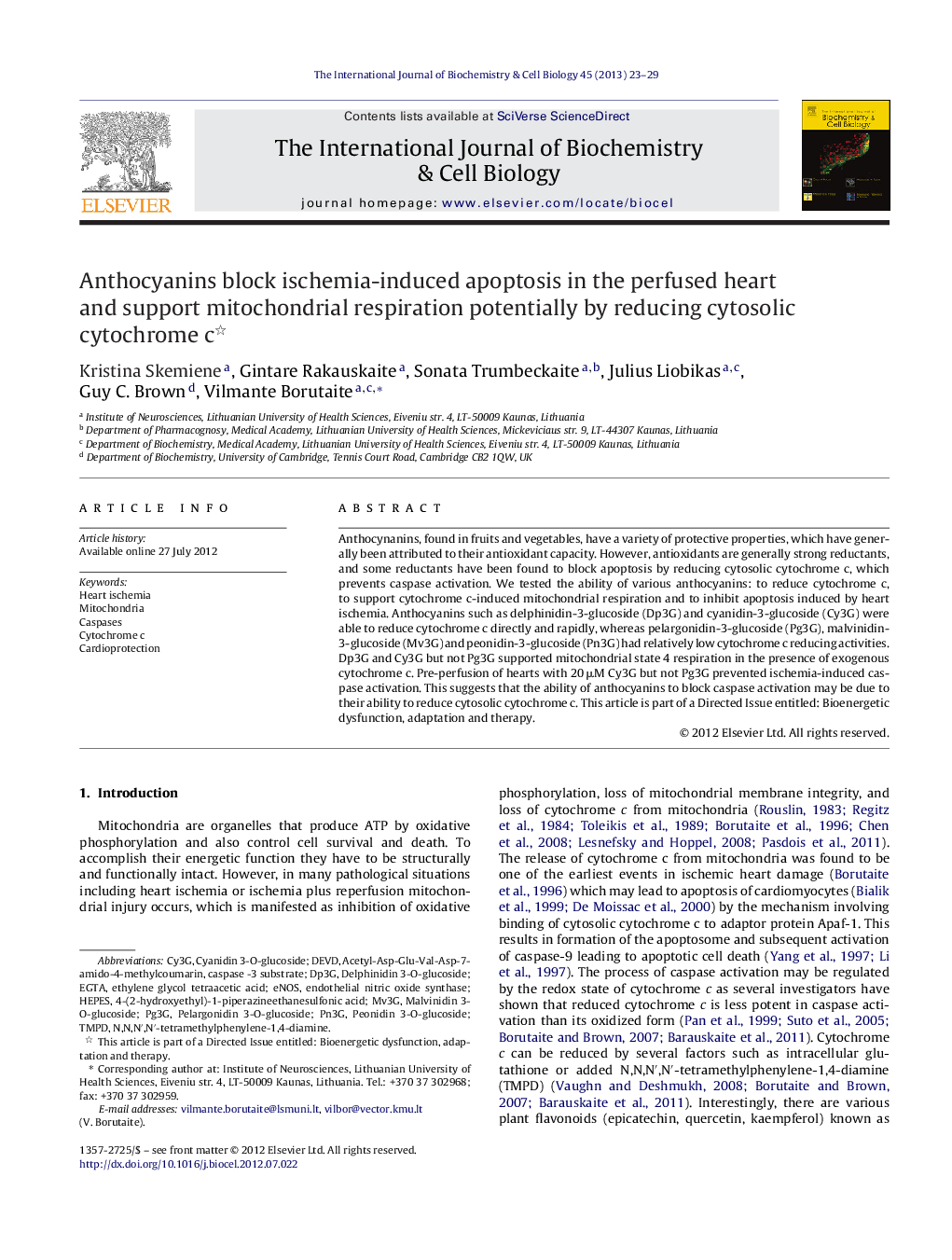| Article ID | Journal | Published Year | Pages | File Type |
|---|---|---|---|---|
| 8324443 | The International Journal of Biochemistry & Cell Biology | 2013 | 7 Pages |
Abstract
Anthocynanins, found in fruits and vegetables, have a variety of protective properties, which have generally been attributed to their antioxidant capacity. However, antioxidants are generally strong reductants, and some reductants have been found to block apoptosis by reducing cytosolic cytochrome c, which prevents caspase activation. We tested the ability of various anthocyanins: to reduce cytochrome c, to support cytochrome c-induced mitochondrial respiration and to inhibit apoptosis induced by heart ischemia. Anthocyanins such as delphinidin-3-glucoside (Dp3G) and cyanidin-3-glucoside (Cy3G) were able to reduce cytochrome c directly and rapidly, whereas pelargonidin-3-glucoside (Pg3G), malvinidin-3-glucoside (Mv3G) and peonidin-3-glucoside (Pn3G) had relatively low cytochrome c reducing activities. Dp3G and Cy3G but not Pg3G supported mitochondrial state 4 respiration in the presence of exogenous cytochrome c. Pre-perfusion of hearts with 20 μM Cy3G but not Pg3G prevented ischemia-induced caspase activation. This suggests that the ability of anthocyanins to block caspase activation may be due to their ability to reduce cytosolic cytochrome c. This article is part of a Directed Issue entitled: Bioenergetic dysfunction, adaptation and therapy.
Keywords
Related Topics
Life Sciences
Biochemistry, Genetics and Molecular Biology
Biochemistry
Authors
Kristina Skemiene, Gintare Rakauskaite, Sonata Trumbeckaite, Julius Liobikas, Guy C. Brown, Vilmante Borutaite,
